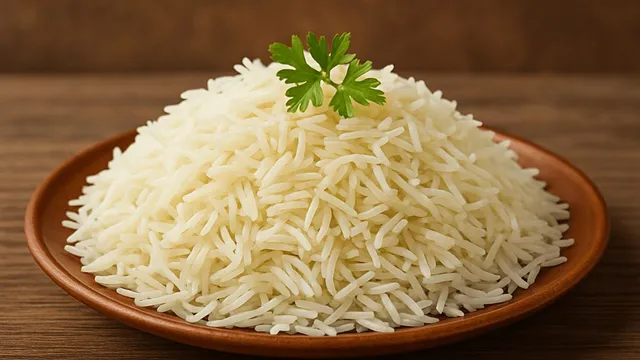- By Aditi Priya Singh
- Sun, 02 Nov 2025 07:02 PM (IST)
- Source:JND
A staple food for millions of people nationwide, rice is one of India's most significant food crops. Rice is grown almost everywhere, from the humid deltas of the east to the fertile plains of the north. However, one state stands out among all the others due to its favourable climate, rich soil, and outstanding rice production. In addition to producing a significant portion of India's total rice production, this region produces a variety of rice types, ranging from aromatic basmati to regular table rice.
For centuries, the local farmers have been growing rice using both traditional and modern farming methods. This state is proud to have been named the "Rice Capital of India" due to its significant contribution and superior produce.
Let’s take a closer look at which Indian state holds this special title, why it’s known for rice cultivation, and how its efforts help feed millions across the nation.
1. Which Indian State Is the Rice Capital?
-1762090270695.jpg) Rice capital of India (Image: Canva)
Rice capital of India (Image: Canva)
West Bengal is frequently referred to as India's Rice Capital. Out of all the Indian states, it produces the most rice. The state is perfect for paddy cultivation because of its lush Gangetic plains, large amounts of rainfall, and temperate climate. In addition to being a significant crop, rice plays a crucial role in the local way of life and diet. West Bengal contributes nearly 13–15% of India’s total rice production, making it the leading rice producer in the country.
ALSO READ: Where Samosas Are Off The Menu: Know The Country That Banned India’s Favourite Snack
2. Why West Bengal Is Perfect for Rice Farming
Several factors make West Bengal the best-suited state for rice cultivation:
1. Fertile Soil: Rivers such as the Ganga and its tributaries produce nutrient-rich alluvial soil.
2. Ample Rainfall: Rice is naturally grown in the state due to the regular monsoon rains.
3. Temperature: High humidity and warm temperatures make for the perfect growing conditions.
4. Irrigation Facilities: The state supports several crops throughout the year due to its well-developed canal and irrigation system.
These conditions allow farmers to grow three types of rice crops — Aus, Aman and Boro throughout the year.
3. Varieties and Cultural Significance
Several well-known rice varieties, including Gobindobhog, Tulaipanji, and Miniket, are found in West Bengal. Short-grain, aromatic gobindobhog rice is frequently used in festive meals and sweets. Rice plays a significant role in Bengal's cultural and culinary legacy, from traditional meals to well-known creations like pulao, payesh (rice pudding), and khichdi. Here, rice is more than just food; it's a representation of wealth and custom.
4. West Bengal’s Role in India’s Food Security
West Bengal, the state that produces the most rice in India, is essential to maintaining food security. Other states benefit from its excess production, which also keeps grain supplies steady. Government programs and farmers' persistent efforts have greatly raised rice yields. As a result, West Bengal is a major agricultural region that provides for millions of people nationwide.
ALSO READ: Which Indian City Is Known As The City Of Dreams and Why?
Rice is the main food for most people in India and is eaten daily in many homes. But have you ever wondered which state is known as the Rice Capital of India? Let’s explore this interesting fact in detail.

